Key Takeaways
- Understanding the depth of Japanese color symbolism can elevate your fashion choices.
- The traditional and modern hues have unique cultural connotations in Japan.
- Incorporating Japanese color symbolism into your outfits could make you stand out.
- Seasonal palettes in Japan go beyond just spring pastels and autumn browns.
- Kimono colors don’t just look pretty; they tell a story.
- Japanese street fashion embraces color symbolism in its own rebellious way.
- Learning about this will not only influence your fashion sense but also your overall cultural understanding.
- Businesses and brands could benefit from a nuanced understanding of color preferences in Japan.
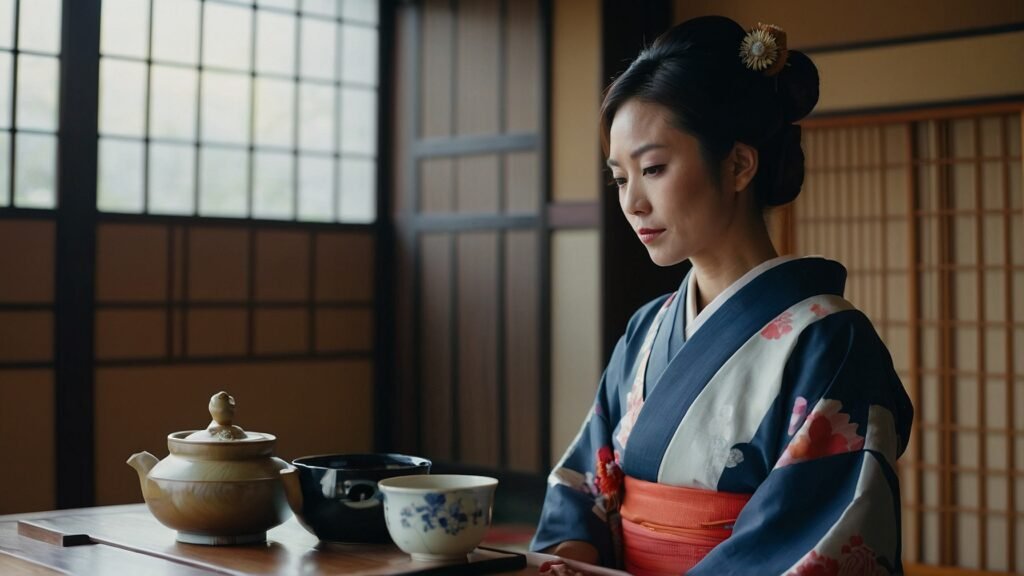
There’s a story hidden in the fabric of the clothes you wear, but often that narrative is even more profound when it draws from cultural influences like color symbolism. Japanese color symbolism is an intriguing case, infused with rich historical undertones and modern applications. From kimonos to Harajuku street fashion, we explore how these colors have shaped sartorial choices.
Traditional Japanese Colors
Understanding the traditional Japanese color system, known as “Wairo,” is akin to stepping back in time. Wairo encapsulates the harmony and respect for nature deeply rooted in Japanese culture.
Colors of Nature and Spirituality
Japan has always had a profound connection with nature. This bonding is evident in the colors they traditionally favor—think of “Sakura-iro” for cherry blossom pink or “Moegi” for fresh bud green. Moreover, there’s a spiritual connection; for example, white (“Shiro”) is often associated with purity and is prominently used in Shinto rituals.
Seasons and Colors
In Japan, each season is more than just a change in weather—it’s an entire palette shift. Spring isn’t just about cherry blossoms; it also embraces “Uguisu,” a shade resembling the native Japanese warbler. Similarly, autumn brings out the “Kuri-iro,” a chestnut brown that evokes the turning of leaves.
Kimono Color Symbolism
Kimonos, the traditional Japanese garment, are a testament to this cultural richness. The colors chosen for kimonos are never random; they signify age, status, and even the specific occasion for which the garment is worn. A “Furisode,” worn by unmarried women, typically has vibrant colors, whereas a “Tomesode,” meant for married women, often comes in subdued tones.
Modern Takes on Traditional Hues
While Japan has a long-standing color tradition, modernization hasn’t left it untouched. The integration of traditional hues into contemporary fashion is a sight to behold.
Street Fashion Influence
Harajuku and Shibuya, Tokyo’s fashion districts, show how traditional colors can take on a modern twist. You’ll find “Murasaki,” the regal purple, paired with neon accessories, or a “Ruri,” a rich blue, being the focal point of a street style outfit.
Western Influence and Integration
Western fashion, particularly the trend-centric culture, has blended well with the Japanese aesthetic. You’ll find “Shiro” (white) and “Kuro” (black) staples in minimalist Japanese wardrobes, especially as these colors have universal appeal and versatility.
High Fashion Interpretation
Internationally acclaimed Japanese designers like Issey Miyake or Rei Kawakubo have beautifully adapted traditional colors. For example, the usage of “Aka” (red) in a haute couture gown may symbolize both passion and the Sun Goddess Amaterasu, a reference any fashionista would be proud to wear.
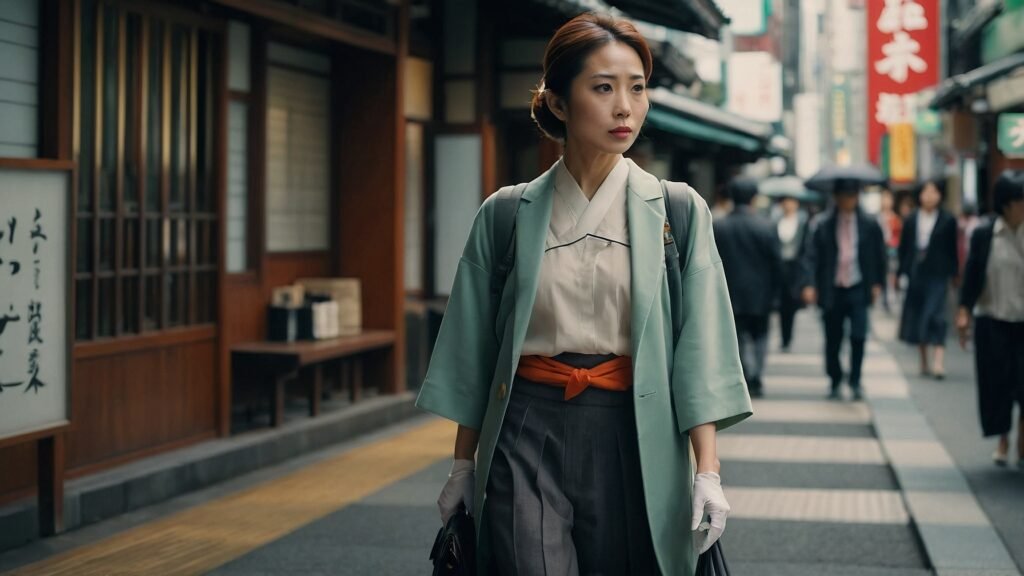
Business and Branding Perspectives
Understanding Japanese color preferences isn’t just useful for your wardrobe; it’s valuable for businesses too.
Target Audience Analysis
Knowing that a color like “Ai” (indigo) is associated with sophistication could guide you in designing a premium product targeted at Japanese consumers. Similarly, “Midori” (green) can symbolize new beginnings and might be a great choice for branding a startup.
Seasonal Campaigns
Planning a Spring collection? Then Sakura pinks and Uguisu greens might be the way to go. For a winter line, “Gin-iro” (silver) and “Kon” (dark navy blue) could resonate better, given their association with tranquility and depth.
Cultural Sensitivity
Being aware of the symbolic weight of colors like “Shiro” (white) can prevent cultural faux pas. In the West, white may be tied to weddings, but in Japan, it’s often worn at funerals. Hence, knowing the cultural context can guide more sensitive and effective branding.
Practical Application: Your Wardrobe
If you’re intrigued by the idea of incorporating Japanese color symbolism into your outfits, you’re in for a treat.
Event-Specific Choices
Heading for a job interview? Wearing “Kuro” (black) could not only make you look sleek but also convey formality and authority according to Japanese color symbolism. Planning for a date? How about a “Momo-iro” (peach) dress symbolizing love and tenderness?
Seasonal Wardrobe
Aligning your wardrobe with Japanese seasonal colors can give you that unique edge. Imagine turning up at a Spring event dressed in “Sakura-iro” and “Uguisu,” you’d not only look gorgeous but also culturally insightful.
The Everyday Look
But what about casual days? Even then, you can incorporate shades like “Cha-iro” (tea-brown) for an earthy, relaxed look, or “Sora-iro” (sky blue) for a day when you’re feeling a little adventurous.

Fashion and Cultural Nuances
Understanding the cultural layers behind the colors you choose in your wardrobe isn’t just a neat fact; it’s essential to ensuring you communicate what you intend. In Japan, colors have distinct cultural meanings deeply rooted in history and religion.
Significance in Traditional Garments
When you look at a Kimono, the vibrant shades are more than just eye-catching. The colors are selected for the emotions they convey and the messages they send. Wearing a blue Kimono, for example, gives off an aura of coolness and serenity. A red Kimono, often seen in wedding ceremonies, symbolizes passion and love.
Colors in Japanese Streetwear
Japan’s street fashion has garnered international recognition, and here too, colors play an essential role. Pastel shades are often seen in Kawaii fashion, invoking a sense of youthful innocence. On the other hand, dark colors and monochrome schemes are popular in more rebellious styles like Visual Kei.
Seasonal Colors and Fashion Trends
Japan has a long history of associating colors with seasons. For instance, the cherry blossom pink is predominantly seen in spring, and warm, earthy tones take over during autumn. Understanding these nuances can help you blend in and stand out in a fashion-forward way when you’re in Japan or anywhere else where the culture is appreciated.
Colors for Different Occasions
Colors are more than just a visual delight; they define the very essence of various occasions in Japan.
Festival Attire
If you’ve ever been to a Japanese festival, you’ll see a riot of colors. Bright reds, blues, and greens dominate, symbolizing joy and celebration. Understanding the choice of colors for such events can help you select the perfect Yukata or festive attire.
Mourning and Funeral Clothes
In contrast to the vibrancy of festivals, mourning attire in Japan is subdued. Black is the color of grief and loss, and white is sometimes worn as a color of purity and mourning. So, if you’re attending a somber event, being cognizant of these color choices is essential.
Business and Professional Settings
In the corporate world, neutral colors like black, gray, and navy are the go-to choices. These colors are considered to promote focus and professionalism, perfect for that important business meeting or job interview.
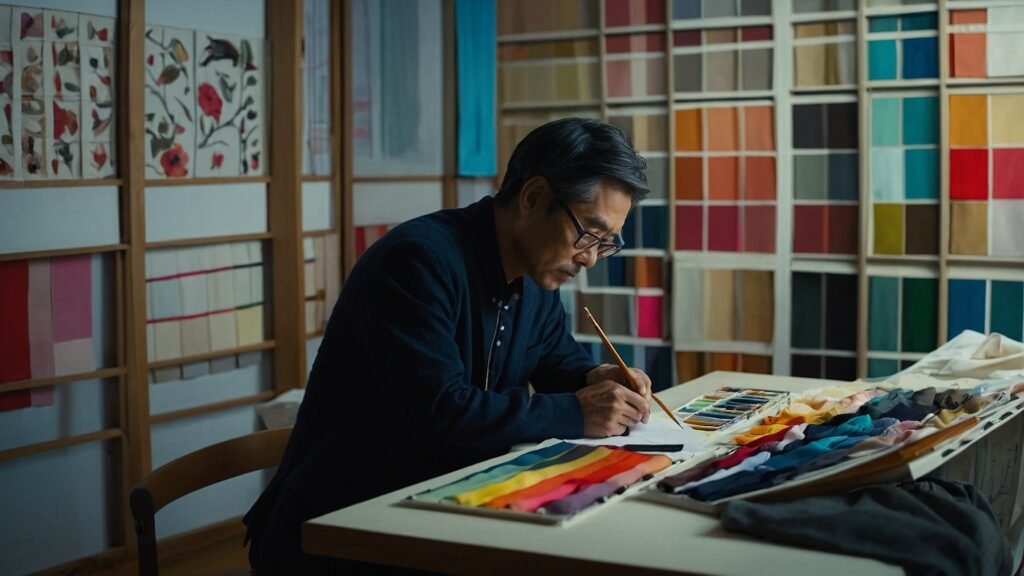
The Role of Anime and Pop Culture
Two paragraphs
- Anime and pop culture have an undeniable influence on color trends in Japanese fashion. In the world of anime, characters often wear colors that signify their personality traits or roles. A hero might wear white to symbolize purity, while a villain may don black or dark purple to convey menace.
- Beyond the screen, these color-coded messages seep into everyday fashion. Fans emulate their favorite characters, incorporating these color themes into their daily outfits, making this a fascinating blend of fiction and reality.
Subconscious Impact of Colors
Here are some nuances about how the colors you wear can impact your life, consciously and subconsciously.
- Boost Confidence
- Influence Perception
- Enhance Mood
- Affect Relationships
- Improve Focus
- Signal Authority
- Encourage Creativity
- Elicit Specific Emotions
- Foster a Sense of Belonging
- Add Vibrancy to Life
How Designers Utilize Japanese Color Symbolism
Fashion designers, both in Japan and globally, often use Japanese color symbolism to bring a deeper layer of meaning to their creations.
- Japanese designers like Issey Miyake or Rei Kawakubo often incorporate traditional colors into their modern designs. These fashion staples aren’t just visually stunning; they’re also imbued with centuries-old cultural nuances.
- Understanding these subtleties can make your wardrobe not just fashionable, but also meaningful. So the next time you see a striking red dress by a Japanese designer, know that it might signify more than just bold fashion; it could represent deep-rooted cultural beliefs about passion and emotion.
- Many western designers have also started to incorporate these principles into their collections. They’re not just adapting styles; they’re translating a whole cultural lexicon of colors.
- When designers focus on this aspect, it creates an enriching experience for the consumer. Suddenly, your clothes are not just garments; they’re storytelling pieces.
- You might not think twice about wearing a yellow scarf, but in Japan, that choice symbolizes bravery and cheerfulness. Designers are increasingly aware of these nuances and are designing with a global audience in mind.
- The more you know about these color meanings, the more you can appreciate the thoughtfulness that goes into these designs. And who knows, maybe the awareness will give you a new perspective on what colors to include in your style.
- By understanding these historical and cultural significances, you can elevate your fashion game to a whole new level. You’ll be making choices that resonate not just with current trends but also with a rich cultural history.
Global Influence of Japanese Color Symbolism
Japanese culture and fashion have a global following, and the intricate web of color symbolism weaves its way into the tapestry of global fashion.
- Not only do these color meanings influence fashion within Japan, but they also have a significant impact on international trends.
- Fashion weeks across the globe often feature designs inspired by Japanese color theories. Celebrities and fashion influencers incorporate these colors into their style, thus making them mainstream.
Now that you’ve delved deep into the fascinating world of Japanese color symbolism in fashion, you might be wondering how to incorporate these insights into your daily life. Well, it’s easier than you might think. Even small changes, like choosing a green accessory for a touch of growth and prosperity or wearing white to signify purity, can make a big difference. These simple yet powerful choices can make your outfit resonate with cultural richness, making you not just a follower of fashion but a connoisseur of cultural nuances.
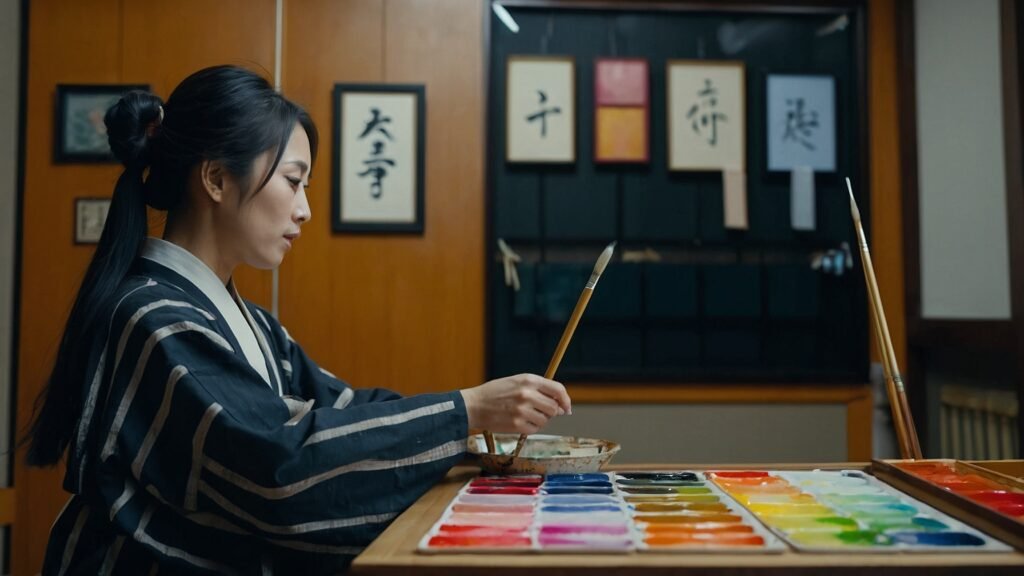
A Guide to Mixing and Matching Japanese Colors
As we’ve explored, each color has its significance in Japanese culture, but what about combining them? Knowing how to tastefully mix and match colors can amplify your fashion sense and even create a harmonious blend of cultural cues.
The Art of Contrasts
Combining opposite colors like red and white or black and yellow isn’t just a fashion statement; it’s a play on cultural symbology. For instance, red and white together can signify both passion and purity, creating an intriguing ensemble that reflects complexity.
Palette Complementarity
Subtle colors like pastels can work well together in an outfit, creating a soft, unified look. Imagine a sakura-inspired outfit with different shades of pink, white, and light blue. The entire ensemble can evoke the gentleness and beauty of cherry blossoms in full bloom.
Monochromatic Sophistication
Choosing various shades of the same color can lend an air of sophistication and simplicity to your outfit. A monochromatic ensemble in earth tones, for example, could ground your outfit, making it simultaneously chic and serene.
Seasonal Fashion and Color Symbolism
You can also tune your wardrobe to sync with the changing seasons. This isn’t just about staying trendy; it’s also about resonating with the cultural and natural shifts that each season brings.
Spring and Renewal
As cherry blossoms bloom and the chill of winter wanes, spring beckons with colors like light pink, lavender, and baby blue. Opting for these colors can put you in harmony with the season of renewal.
Fall and Harvest
As the leaves change, so should your wardrobe. Warm tones like red, orange, and mustard yellow reflect the season’s earthy vibes. These colors not only keep you stylish but also in tune with the natural and cultural zeitgeist.
Dressing for Ceremonies: The Role of Color
When it comes to special occasions in Japan, your choice of color can speak volumes about your respect for tradition and your understanding of the ceremony you’re attending.
Weddings and Celebrations
As mentioned, red is a color often associated with love and passion and is usually prominent in weddings. Complementary colors like white and gold add to the sense of purity and grandeur.
Rituals and Ceremonies
In traditional tea ceremonies or spiritual rituals, the colors worn are subdued. Shades of green, brown, and off-white signify a deep respect for the solemnity of the occasion.
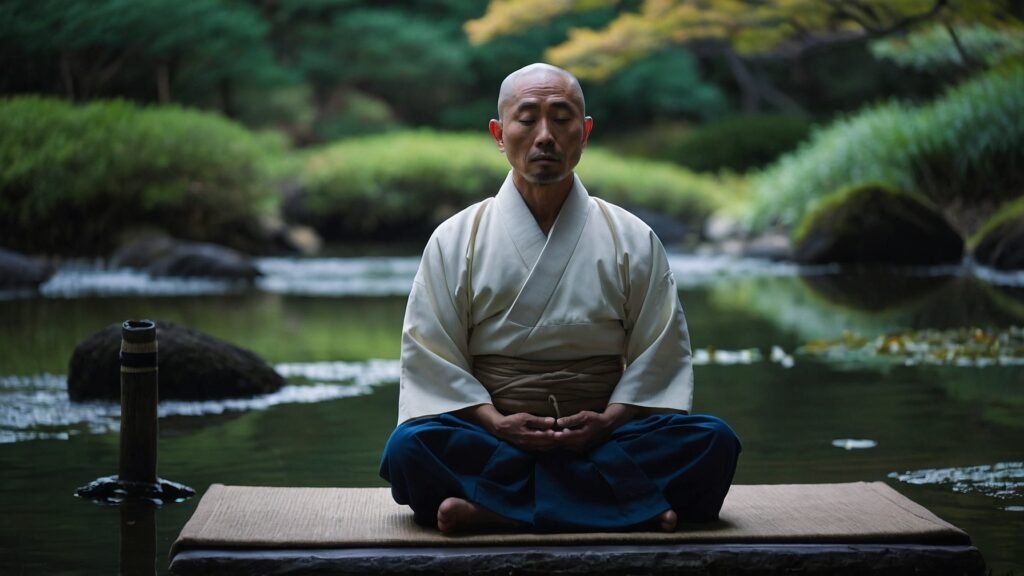
DIY Fashion: Personalizing Japanese Color Symbolism
If you’re a fan of DIY fashion, you can incorporate these color insights into your projects.
- Whether you’re knitting a scarf, customizing a jacket, or even creating your own kimonos, knowing what each color symbolizes can add depth to your designs.
- For instance, if you’re sewing patches onto a backpack, you could choose a blue patch for calmness and a yellow patch for cheerfulness. In this way, your fashion also becomes a form of self-expression that’s steeped in cultural wisdom.
Your Color Journey in Japan
Understanding the significance of colors in Japanese fashion is like opening a new chapter in your style journey. It’s a captivating blend of the past and the present, the East and the West, the visual and the visceral. Whether you’re shopping in the bustling streets of Shibuya or ordering an authentic kimono online, you’re not just picking out clothes; you’re choosing symbols, stories, and meanings. It’s a deeply enriching experience that transforms fashion from mere aesthetics to an expression of your identity and values.
Conclusion
Fashion is an ever-evolving language, but the symbolism of colors in Japanese fashion has stood the test of time. From traditional kimonos to modern streetwear, the rich palette of Japanese colors has something for everyone. Now that you’re armed with this knowledge, each color you wear won’t just be a choice; it will be a statement. So the next time you dress, think beyond the fabric and cut; delve deeper into the hues that color your world.
By understanding this complex, beautiful spectrum, you elevate your wardrobe from a collection of clothes to a curated exhibit of art, history, and personal meaning. So go ahead, explore this vivid tapestry of colors and enrich your fashion narrative in ways you’ve never imagined. After all, in the realm of fashion and beyond, colors are more than just visual cues; they’re the silent narrators of our lives’ stories.
Summary Table: Understanding the Colors in Japanese Fashion
| Color | Symbolism | Occasions | Fashion Styles | Seasonal Fit |
|---|---|---|---|---|
| Red | Passion, love | Weddings | Kimonos, streetwear | Winter |
| White | Purity, simplicity | Ceremonial | Traditional, casual | All seasons |
| Black | Formality, elegance | Formal events | Businesswear | Winter, Fall |
| Yellow | Cheerfulness, energy | Casual outings | Streetwear | Spring, Summer |
| Blue | Calmness, loyalty | Everyday | Casualwear | All seasons |
| Green | Harmony, growth | Spiritual rituals | Traditional | Spring, Summer |
| Gold | Prosperity, wealth | Celebrations | Formal kimonos | All seasons |
| Brown | Earthiness, grounding | Casual | Casual, Bohemian | Fall |
| Orange | Enthusiasm, creativity | Festivals | Streetwear, casual | Fall |
| Pink | Femininity, softness | Casual, celebrations | Feminine styles | Spring |
Frequently Asked Questions
What does the color red symbolize in Japanese fashion?
In Japanese fashion, red often symbolizes passion and love. It’s a popular color for weddings and special celebrations.
Can I mix contrasting colors in my outfit?
Absolutely! Contrasting colors can create an intriguing ensemble that reflects both your personal style and cultural insights. For example, red and white together can signify both passion and purity.
Is it important to consider seasons when choosing colors?
Yes, tuning your wardrobe to sync with the changing seasons can put you in harmony with natural and cultural shifts. For instance, light pink, lavender, and baby blue are excellent choices for the spring season.
How can I incorporate Japanese color symbolism into DIY fashion?
You can knit, sew, or customize your clothing based on the colors that resonate with you and their cultural meanings. For instance, a blue patch could signify calmness, and a yellow patch could signify cheerfulness.
What are some formal colors to wear for business or ceremonial events in Japan?
Black is often considered the most formal color, signifying elegance and formality. White is another color often worn on formal or ceremonial occasions to symbolize purity and simplicity.
Can I apply these color insights if I’m not in Japan?
Absolutely! The universal language of colors allows you to integrate these insights into your fashion choices, no matter where you are in the world. Understanding the cultural nuance adds an enriching layer to your sartorial decisions.
By delving into this guide, you’ve added a fascinating dimension to your fashion choices, one that goes beyond fabric and cut to engage with color in the most meaningful way. So go ahead, experiment, mix, match, and most importantly, enjoy your colorful journey through the captivating world of Japanese fashion.

Neha Z. is not just any writer; she’s a storyteller who has graced the online world with her evocative prose for over half a decade. Venturing into the intricate nuances of women’s lives, she weaves stories that range from life’s highs and lows to the multifaceted essence of femininity. Each piece she pens radiates sincerity and artistry. As you delve into Neha’s musings, you’ll find reflections that echo your own journey and insights that inspire. Immerse yourself in her world, and let her stories touch your heart.
Reviewed By: Joanna Perez and Anna West
Edited By: Lenny Terra
Fact Checked By: Matthew Mansour
Photos Taken or Curated By: Matthew Mansour

